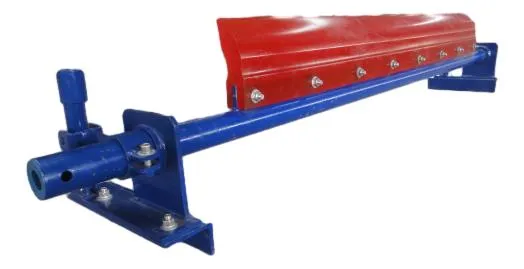 Afrikaans
Afrikaans  Albanian
Albanian  Amharic
Amharic  Arabic
Arabic  Armenian
Armenian  Azerbaijani
Azerbaijani  Basque
Basque  Belarusian
Belarusian  Bengali
Bengali  Bosnian
Bosnian  Bulgarian
Bulgarian  Catalan
Catalan  Cebuano
Cebuano  Corsican
Corsican  Croatian
Croatian  Czech
Czech  Danish
Danish  Dutch
Dutch  English
English  Esperanto
Esperanto  Estonian
Estonian  Finnish
Finnish  French
French  Frisian
Frisian  Galician
Galician  Georgian
Georgian  German
German  Greek
Greek  Gujarati
Gujarati  Haitian Creole
Haitian Creole  hausa
hausa  hawaiian
hawaiian  Hebrew
Hebrew  Hindi
Hindi  Miao
Miao  Hungarian
Hungarian  Icelandic
Icelandic  igbo
igbo  Indonesian
Indonesian  irish
irish  Italian
Italian  Japanese
Japanese  Javanese
Javanese  Kannada
Kannada  kazakh
kazakh  Khmer
Khmer  Rwandese
Rwandese  Korean
Korean  Kurdish
Kurdish  Kyrgyz
Kyrgyz  Lao
Lao  Latin
Latin  Latvian
Latvian  Lithuanian
Lithuanian  Luxembourgish
Luxembourgish  Macedonian
Macedonian  Malgashi
Malgashi  Malay
Malay  Malayalam
Malayalam  Maltese
Maltese  Maori
Maori  Marathi
Marathi  Mongolian
Mongolian  Myanmar
Myanmar  Nepali
Nepali  Norwegian
Norwegian  Norwegian
Norwegian  Occitan
Occitan  Pashto
Pashto  Persian
Persian  Polish
Polish  Portuguese
Portuguese  Punjabi
Punjabi  Romanian
Romanian  Russian
Russian  Samoan
Samoan  Scottish Gaelic
Scottish Gaelic  Serbian
Serbian  Sesotho
Sesotho  Shona
Shona  Sindhi
Sindhi  Sinhala
Sinhala  Slovak
Slovak  Slovenian
Slovenian  Somali
Somali  Spanish
Spanish  Sundanese
Sundanese  Swahili
Swahili  Swedish
Swedish  Tagalog
Tagalog  Tajik
Tajik  Tamil
Tamil  Tatar
Tatar  Telugu
Telugu  Thai
Thai  Turkish
Turkish  Turkmen
Turkmen  Ukrainian
Ukrainian  Urdu
Urdu  Uighur
Uighur  Uzbek
Uzbek  Vietnamese
Vietnamese  Welsh
Welsh  Bantu
Bantu  Yiddish
Yiddish  Yoruba
Yoruba  Zulu
Zulu drive pulley
Understanding Drive Pulleys The Key Component in Mechanical Systems
In the realm of mechanical engineering, drive pulleys play a pivotal role in the transmission of power and the functioning of various machines. A drive pulley is a wheel that is connected to a power source, typically an electric motor, and is used to transfer motion and force to another component, such as a belt or chain. This article delves into the importance, types, and applications of drive pulleys, shedding light on their critical role in numerous mechanical systems.
The Mechanics of Drive Pulleys
At its core, a drive pulley consists of a rotational disk or wheel that is mounted on an axle. When the axle rotates, the pulley turns, inducing movement in adjacent components through belts or chains attached to its periphery. This system allows for the effective transmission of power from the motor to other areas of machinery.
The arrangement of pulleys can differ significantly depending on application requirements. In simple setups, a single drive pulley connects directly to a motor, but more complex systems might involve multiple pulleys working in tandem to achieve the desired speed and torque. For instance, using a combination of drive pulleys can help modify the velocity of an output shaft, enabling the fine-tuning of performance in vehicles, conveyor systems, and industrial machinery.
Types of Drive Pulleys
Drive pulleys are categorized into several types, each serving a unique function based on the design of the system. The most common types include
1. Fixed Pulleys These are stationary and do not move with the load being lifted. Fixed pulleys change the direction of force and are ideal for simple lifting tasks.
drive pulley

2. Movable Pulleys These pulleys move along with the load and can significantly reduce the amount of force required to lift an object, making them highly efficient for heavy loads.
3. Compound Pulleys Also known as block and tackle systems, compound pulleys combine both fixed and movable pulleys to enhance mechanical advantage, reducing the effort needed to lift heavy loads even further.
4. Variable Pulleys These pulleys can adjust their diameter, allowing for variable speeds and torque. This feature is particularly helpful in applications requiring flexibility, such as in automobiles and other machinery that operate under varying conditions.
Applications of Drive Pulleys
Drive pulleys are ubiquitous in various industries and sectors. They are integral to the operation of conveyor belts in manufacturing facilities, where they facilitate the movement of goods and materials. In automotive engineering, drive pulleys help in the drivetrain assemblies, effectively distributing power from the engine to the wheels.
In the agricultural sector, drive pulleys are found in machinery such as tractors and harvesters, ensuring that these complex systems operate smoothly and efficiently. Even in recreational equipment, such as bicycles and recreational vehicles, drive pulleys contribute to the overall functionality and performance.
Conclusion
In summary, drive pulleys are a fundamental component in the world of mechanical systems. Their ability to transfer motion and power efficiently makes them indispensable in a myriad of applications across various industries. Understanding the mechanics behind drive pulleys, as well as their types and uses, is crucial for anyone involved in engineering or machinery design. As technology continues to advance, the evolution of drive pulleys will likely lead to even more innovative applications, driving efficiency and performance in mechanical systems for years to come.
-
Revolutionizing Conveyor Reliability with Advanced Rubber Lagging PulleysNewsJul.22,2025
-
Powering Precision and Durability with Expert Manufacturers of Conveyor ComponentsNewsJul.22,2025
-
Optimizing Conveyor Systems with Advanced Conveyor AccessoriesNewsJul.22,2025
-
Maximize Conveyor Efficiency with Quality Conveyor Idler PulleysNewsJul.22,2025
-
Future-Proof Your Conveyor System with High-Performance Polyurethane RollerNewsJul.22,2025
-
Driving Efficiency Forward with Quality Idlers and RollersNewsJul.22,2025





























